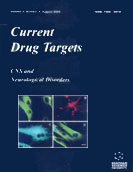Abstract
Aggregation of Aβ plays a key role in the pathogenesis of Alzheimers disease. Although the highly structured Aβ aggregates (fibrils) have long been thought to be the toxic form of Aβ, recent evidence suggests that smaller, soluble intermediates in Ab aggregation are the real culprit. Because these oligomeric aggregates are already formed in the secretory pathway, this raises another issue: Is intra- or extracellular Aβ involved in the pathogenic cascade? Because aggregated proteins are very toxic, cells have developed quality control responses to deal with such proteins. A prime site for quality culum. Here, aberrant proteins are recognized and can be targeted for degradation to the cytosolic quality control system. In addition, there is accumulating evidence for quality control in other subcellular compartments in the cell. All quality control mechanisms are initially protective, but will become destructive after prolonged accumulation of aggregated proteins. This is enhanced by decreased efficiency of these systems during aging and therefore, these responses may play an important role in the pathogenesis of Alzheimers disease. In this review, we will discuss the role of protein quality control in the neurotoxicity of Aβ.
Keywords: alzheimers disease, protein quality control, endoplasmic reticulum, unfolded protein response, retrograde transport, ubiquitin-proteasome system
 2
2

















